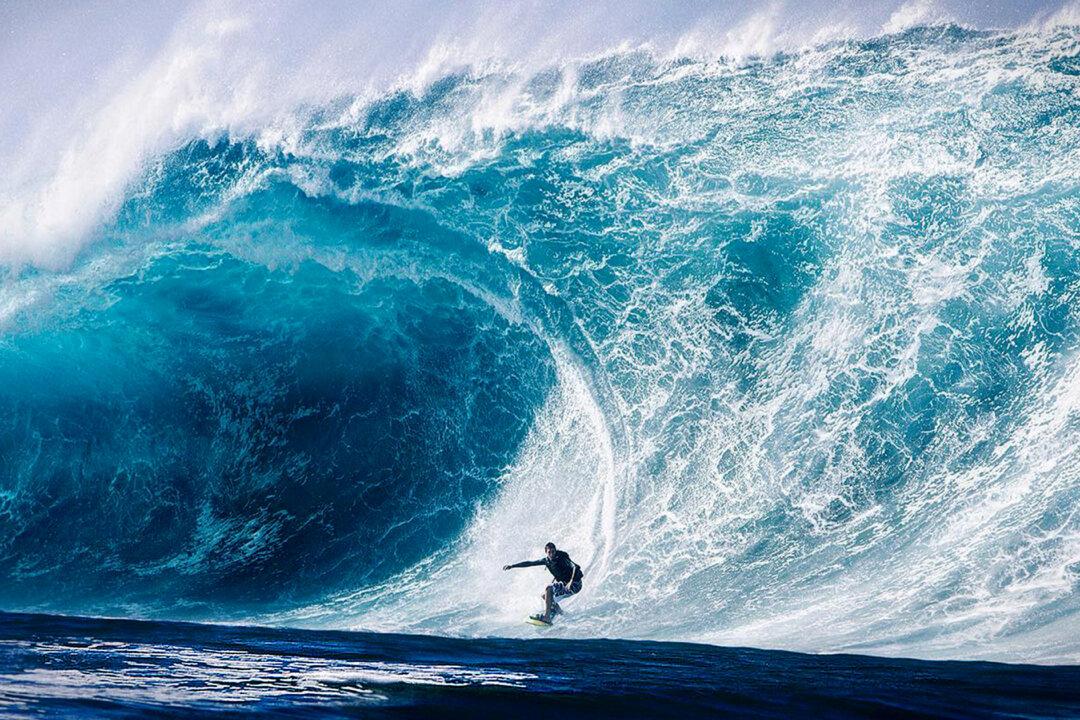Disclaimer: This article was published in 2023. Some information may no longer be current.
A tropical swell is no joke. Heeding warnings of 50-foot waves, your average beachgoer would probably give the boogie-boarding a rest and hunker down shoreside for a while. But not if you’re Fred Pompermayer. He’s stowing his camera aboard his jet ski and launching off right into the danger zone.






